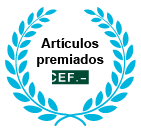El nombre de los hoteles españoles. Un análisis del naming de los hoteles en Benidorm y Alicante
DOI:
https://doi.org/10.51302/marketing.2024.21373Palabras clave:
nombre corporativo, nombre de marca, turismo y hospitality, destination branding, Benidorm, Costa BlancaResumen
La importancia del branding en el turismo y la hostelería ha sido objeto de estudio por parte de la comunidad científica. Sin embargo, hay poco trabajo específico sobre los nombres de marca en este sector. Es necesario conocer con mayor profundidad cuáles son los criterios denominativos predominantes en los nombres de hoteles y en otros tipos de alojamientos turísticos. Hemos analizado el nombre de la empresa hotelera en una muestra de 212 alojamientos turísticos (pymes y empresas familiares, en su gran mayoría). Los resultados obtenidos indican que, con respecto a los criterios denominativos elegidos, existe sobre todo diferencia entre los criterios elegidos para nombrar a los hoteles y los criterios elegidos para nombrar en los otros tipos de alojamientos turísticos, siendo estos últimos más descriptivos y menos implicativos o evocadores. El criterio denominativo más recurrente en el sector es el “fantasía” o “creativo”. Esta investigación tiene como objetivo ampliar el conocimiento sobre la elección del nombre corporativo en el sector del hospitality, basándose en la tipología establecida por la comunidad científica, para que pueda servir como punto de referencia para futuras investigaciones sobre nombre de marca corporativo o branding.
Descargas
Citas
Aaker, D. A. (1991). Capitalizing on the Value of a Brand Name. The Free Press.
Aaker, D. A. (2004). Leveraging the corporate brand. California Management Review, 46(3), 6-18.
Alserhan, B. A., and Alserhan, Z. A. (2012). Naming businesses: names as drivers of brand value. Competitiveness Review, 22(4), 329-342.
Arora, S., Kalro, A. D., and Sharma, D. (2015). A comprehensive framework of brand name classification. Journal of Brand Management, 22, 79-116.
Chajet, C., and Shachtman, T. (1991). Image by Design: For Corporate Vision to Business Reality. Addison-Wesley Longman.
Chan, A. K. K., and Huang, Y. Y. (2001). Chinese brand naming: a linguistic analysis of the brands of ten product categories. Journal of Product & Brand Management, 10(2). 103-119. https://doi.org/10.1108/10610420110388663
Chen, L. (2021). Marketing hospitality: An analysis of English names of Taipei hotels. English Today, 37(4), 236-242. https://doi.org/10.1017/S0266078419000518
Connell, J. (1992). Branding Hotel Portfolios. International Journal of Contemporary Hospitality Management, 4(1), https://doi.org/10.1108/09596119210007965
Fox, K. A. (2002). Brand Management: Brand Naming Challenges in the New Millennium. The Journal of Business Strategy, 23(6), 12-13. https://doi.org/10.1108/eb040279
Garzón Castrillón, M. A., Orozco Quintero, D., and Ramírez Gañan, A. E. (2020). Gestión de la felicidad, bienestar subjetivo y satisfacción laboral. Dimensión Empresarial, 18(2). https://doi.org/10.15665/dem.v18i2.2057
Huang, Y., and Chan, A. (2005). The role of language and culture in marketing communication: A study of Chinese brand names. Journal of Asian Pacific Communication, 15(2), 257-285. https://doi.org/10.1075/japc.15.2.04hua
Ingram, P. (1996). Organizational form as a solution to the problem of credible commitment: The evolution of naming strategies among U.S. hotel chains, 1896-1980. Strategic. Management Journal, 17, 85-98. https://doi.org/10.1002/smj.4250171007
Kashmiri, S., and Mahajan, V. (2010). What’s in a name? An analysis of the strategic behavior of family firms. International Journal of Research in Marketing, 27(3), 271-280. https://doi.org/10.1016/j.ijresmar.2010.04.001
King, S. (1991). Brand-building in the 1990s. The Journal of Consumer Marketing, 8(4), 43.
Kohli, C., and LaBahn, D. W. (1997). Creating effective brand names: A study of the naming process. Journal of Advertising Research, January-February, 67-75.
Kohli, C., and Suri, R. (2000). Brand names that work: A study of the effectiveness of different types of brand names. Marketing Management Journal, 10(2), 112-120.
Kollmann, T., and Suckow, C. (2007). The corporate brand naming process in the net economy. Qualitative Market Research: An international Journal, 10(4), 349-361. https://doi.org/10.1108/13522750710819694
Kormazina, O. P., Ruban, D. A., and Yashalova, N. N. (2022). Hotel Naming in Russian Cities: An Imprint of Foreign Cultures and Languages between Europe and Asia. Societies, 12(2), 58. https://doi.org/10.3390/soc12020058
Lombard, C. G., and Du Plessis, T. (2016). Beyond the Branding Iron: Cattle Brands as Heritage Place Names in the State of Montana. Names, 64, 224-233. https://doi.org/10.1080/00277738.2016.1223119
Manthiou, A., Kang, J., Sumarjan, N., and Tang, L. (2016). The Incorporation of Consumer Experience into the Branding Process: An Investigation of Name-Brand Hotels. International Journal of Tourism Research, 18, 105-115. https://doi.org/10.1002/jtr.2037
Martínez, J. A. (2023). La Costa Blanca bate el récord de turistas extranjeros al superar los seis millones en solo diez meses. Diario Información, 8 de diciembre de 2023, 8-9.
Muzellec, L. (2006). What is in a Name Change? Re-Joycing Corporate Names to Create Corporate Brands. Corporate Reputation Review, 8(4), 305-316. https://doi.org/10.1057/palgrave.crr.1540257
Nash, J. (2016). May I have your name please? Norfolk Island hotel names. Tourism. Analysis, 21, 541-547. https://doi.org/10.3727/108354216X14653218477723
Olivares-Delgado, F., Benlloch-Osuna, M. T., and Pinillos-Laffón, A. (2016). An approach to patronymic names as a resource for familiness and as a variable for family business identification. European Journal of Family Business, 6(1), 32-45.https://doi.org/10.24310/ejfbejfb.v6i1.5045
Pinillos-Laffón, A., Olivares-Delgado F., and Rodríguez-Valero, D. (2016). The Name of the Corporate Brand. A Taxonomy of the Names of Family Business in Spain. Revista Latina de Comunicación Social, 71, 750-774. http://dx.doi.org/10.4185/RLCS-2016-1119
Robertson, K. (1989). Strategically Desirable Brand Name Characteristics. Journal of Consumer Marketing, 6(4), 61-71. https://doi.org/10.1108/EUM0000000002563
Room, A. (1987). History of branding. In J. Murphy (Ed.), Branding: A key marketing tool. McMillan.
Sujatna, E. T. S., Pamungkas, K., and Heriyanto. (2019) Names as branding on nature tourism destinations in Pangandaran, Jawa Barat-Indonesia: A linguistic perspective. Pertanika Journal of Social Science and Humanities, 27, 803-814.
Susanto, P. Ch., and Mahadewi, Ni M. E. (2015). Brand Name Distinctiveness of Star Hotels in Bali. Journal of Business on Hospitality and Tourism, 1(1). https://doi.org/10.22334/jbhost.v1i1.8
Taylor, H. (1995). How to develop a strong hotel branding strategy with a weak branding budget. Journal of Vacation Marketing, 2(1), 63-66. https://doi.org/10.1177/135676679500200106
Tent, J., and Blair, D. (2019). A Clash of Names: the Terminological Morass of a Toponym Class. Names, 67(2), 65-77. https://doi.org/10.1080/00277738.2018.1452907
Turley, L. W., and Moore, P. A. (1995). Brand name strategies in the service sector. Journal of Consumer Marketing, 12(4), 42-50. https://doi.org/10.1108/07363769510095298
Xiang, X. (2012). Linguistic and cultural characteristics of domain names of the top fifty most-visited websites in the US and China: Across-linguistic study of domain names and e-branding. Names, 60, 210-219.
Descargas
Publicado
Versiones
- 07-11-2024 (2)
- 23-05-2024 (1)
Cómo citar
Número
Sección
Licencia
Derechos de autor 2024 Fernando Olivares Delgado, Daniel Rodríguez-Valero, Alberto Pinillos-Laffón, María Teresa Benlloch-Osuna

Esta obra está bajo una licencia internacional Creative Commons Atribución-NoComercial-SinDerivadas 4.0.





















